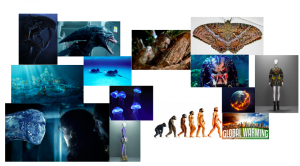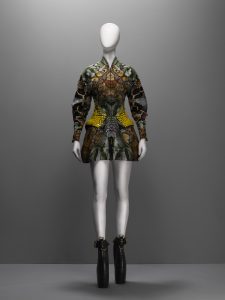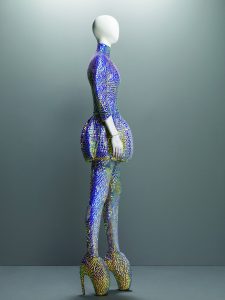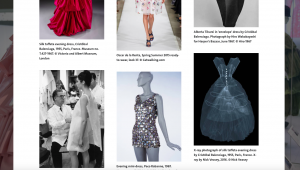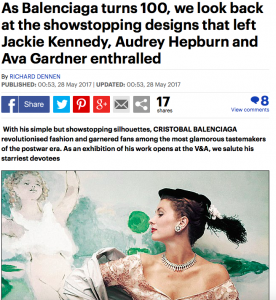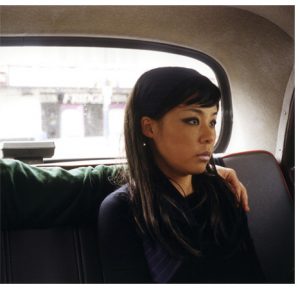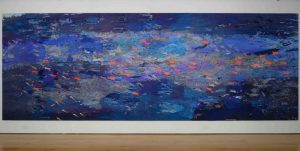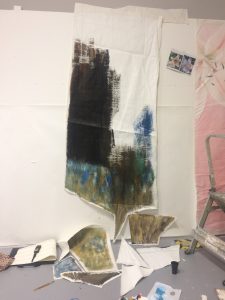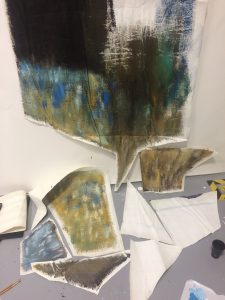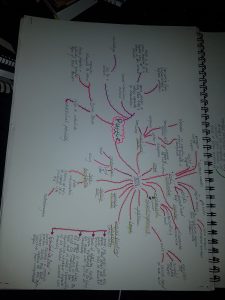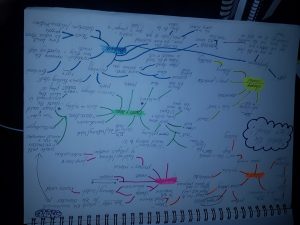Alexander McQueen’s Spring/Summer 2010 Plato Atlantis explores colour and texture whilst mainly inspired by nature. I feel inspired by this collection as he has included many references and portrayed each of them through techniques on each garment, for example life above sea, moth and snake prints, as well as the transition to underwater with stingrays, jellyfish and blue/green hues. These two opposites are heavily explored with a twist of Si-fi fantasy such as aliens/creatures and under water cities, Atlantis and Ridley Scott’s Alien, 1979. As well as reversing the ideas of Darwin’s theory of evolution by making the garment have more amphibian like features.
McQueen’s Spring/Summer 2010, is split between under water life and above sea level. The garments exploring underwater life are covered in blue and green hues mixed with iridescent sequins. The full body garment has ¾ sleeves a high neck and a jellyfish like puff around the thighs. The full iridescent sequined garment mirrors the scales of a fish or the gleam of the sun on the sea’s surface, while the puff looks like the head of a jellyfish.
The colours and textures of snakes and moths heavily inspire the above sea garments. The garment is a mini dress with oversized long sleeves and a small collar with a zip down the front, it is covered yellow, green and brown tones of snake skin print, teamed with mustard like yellow sequins on the waist to look like the scales of a reptile, shaping the waist in an unusual way. Inspired by John McTiernan’s ‘Predator’ 1987. The strong/structured garment accentuating parts of the body giving the human body animalistic features.
Overall, I really like his SS10 collection, I find the combinations of cool blue tones and warm brown tones from the inspiration of nature are really well explored and are interesting within each garment as well as the over exaggerated structure of the Si-fi element in the garments.
-Darwin nineteenth century theories of evolution
-twenty-first century concerns of global warming
-Snakes, moths, Jellyfish, Stingrays
-Atlantis
-Ridley Scott’s ‘Alien’ 1979
-James Cameron’s ‘The Abyss’ 1989
– John McTiernan’s ‘Predator’ 1987
Bibliography
Bethune K. V&A The Museum of Savage Beauty (2015) Encyclopedia Of Collections: Platos Atlantis. Avalible from: http://www.vam.ac.uk/museumofsavagebeauty/rel/encyclopedia-of-collections-platos-atlantis/
Accessed: 29th November 2017

